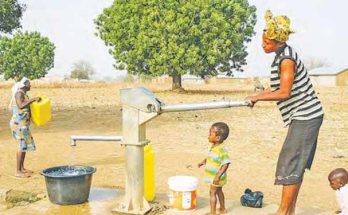 Checkered shirts for American chain Gap, Slate leggings for Swedish store H&M, Twill shorts for Germany’s Tchibo, They are among an extending list of clothes being stitched together for big brands in Ethiopia.
Checkered shirts for American chain Gap, Slate leggings for Swedish store H&M, Twill shorts for Germany’s Tchibo, They are among an extending list of clothes being stitched together for big brands in Ethiopia.
As labor, raw material and tax cost rise in China – the world’s dominant textiles producer – the Horn of Africa country is racing to offer cheaper alternatives, and go up against countries like Bangladesh and Vietnam that are established low-cost garment makers.
Most of the clothing companies to source production in Ethiopia are testing the waters with small volumes. But the government is working very hard to attract their business with tax breaks, subsidies and cheap loans. This is part of a drive to turn into a manufacturing center.
There has been progress; foreign investment in the textile industry has risen from 4.5 billion birrs ($166.5 million) in 2013/14 to 36.8 billion in 2016/17, according to the Ethiopian Investment Commission, a government agency.
Arkebe Oqubay, a prime ministerial adviser directing the industrialization drive said “This is a huge success”, during the inauguration of an industrial park in the northern Ethiopian town of Kombolcha earlier this year “The challenge now is to bring the world’s biggest companies into the country.”
Some of the big brands have already arrived, most of them sourcing some production locally, like Gap and H&M, but a few building factories themselves.
Some of those to set up factories this year are U.S. fashion giant PVH, whose brands include Calvin Klein and Tommy Hilfiger; Dubai-based Velocity Apparels Companies, that supplies Levi‘s, Zara and Under Armour; and China‘s Jiangsu Sunshine Group, whose customers include Giorgio Armani and Hugo Boss.
French retailer Decathlon and over 150 companies from China and India will begin sourcing production from Ethiopia soon, said the investment commission.
However, while Ethiopia is moving faster than its continental rivals, there is a long road ahead in terms of Logistical, bureaucratic and cotton-quality problems.
The gulf in textiles exports is huge; Ethiopia’s totaled about $115 million in 2015, against Vietnam’s $27 billion, Bangladesh’s $28 billion and China’s $273 billion, according to the World Bank’s latest figures.
Ethiopia’s fledgling sector can ill afford the kind of working conditions scandals that have dogged the low-cost garment industry elsewhere, and officials said they were sending representatives to Asia to learn best practices.



